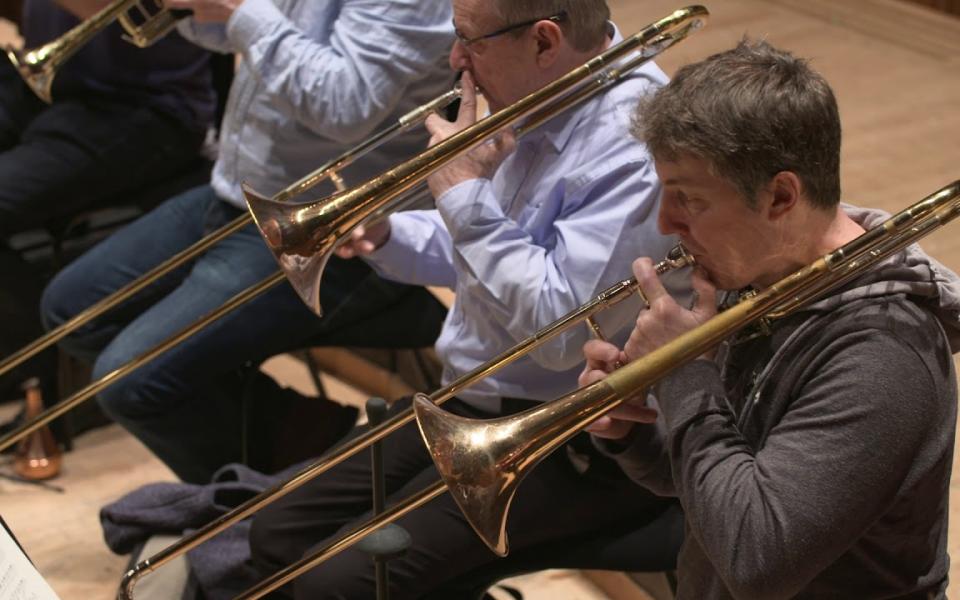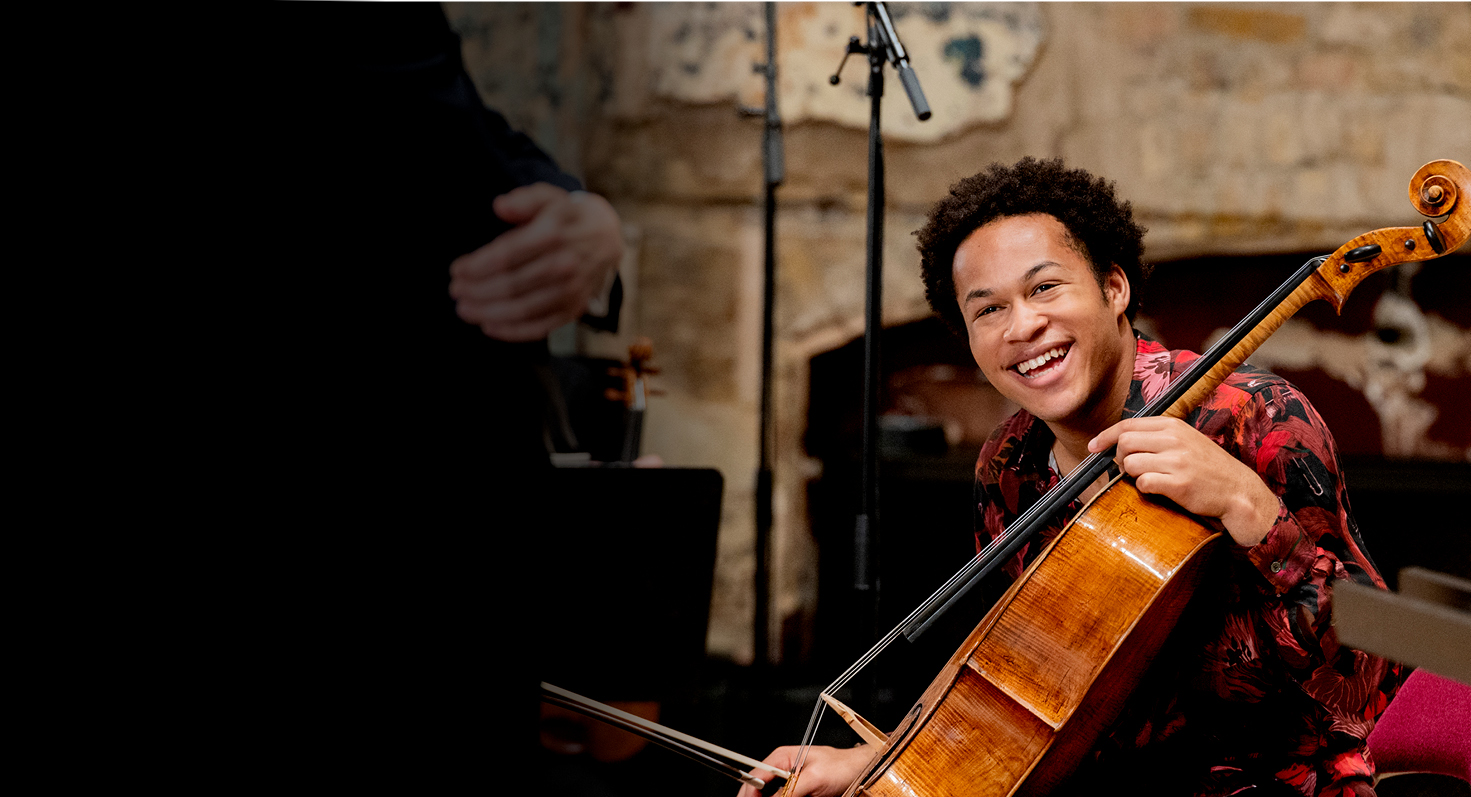Trombone
The orchestra at its grandest and most powerful moments is often underpinned and given its power by the trombones.

Endowment opportunities at the Philharmonia offer supporters unique access and insights to our players. Find out more here:
Introduction
This capability of the trombone has been repeatedly exploited by composers over the years and, in common with many instruments of the orchestra, this has created a stereotype of what people think the trombone is all about.
It can also be a very soft melodic instrument. In fact, during the Renaissance the trombone had a golden era and a tremendous amount of subtle and delicate music was written for groups of trombones which would be played during church services. Only at the beginning of the 19th century did the trombone cease to be thought of as a church instrument and become a regular member of the orchestra.
Did you know?
The German name for the trombone is sackbut, meaning ‘pull and push’.
Today
Today the trombone is also known for one of its most distinctive capabilities: the ability to slide between notes or glissando. Using the slide of the instrument to create swooping sounds often sounds unavoidably comic and as a result this effect has long been a staple of cartoon soundtracks.
Construction
Trombones come in three main sizes: alto, tenor and bass. The tenor is the standard instrument and features in most brass sections. Bass is also often added when low notes are required. The alto is relatively rare and is pitched a fourth higher than the tenor. All three instruments have a cylindrical bore and a slide for selecting pitches.

Frequency Range
82 – 523 Hz
Tube Length
270 cm
More trombone
Join us on Instagram
Keep up to date about online concerts, behind the scenes content and much more

Keep up to date
Sign up for email updates and be the first to receive stories, films and concert announcements

Support the Philharmonia
Enjoyed this content? We need your help to keep these resources free



